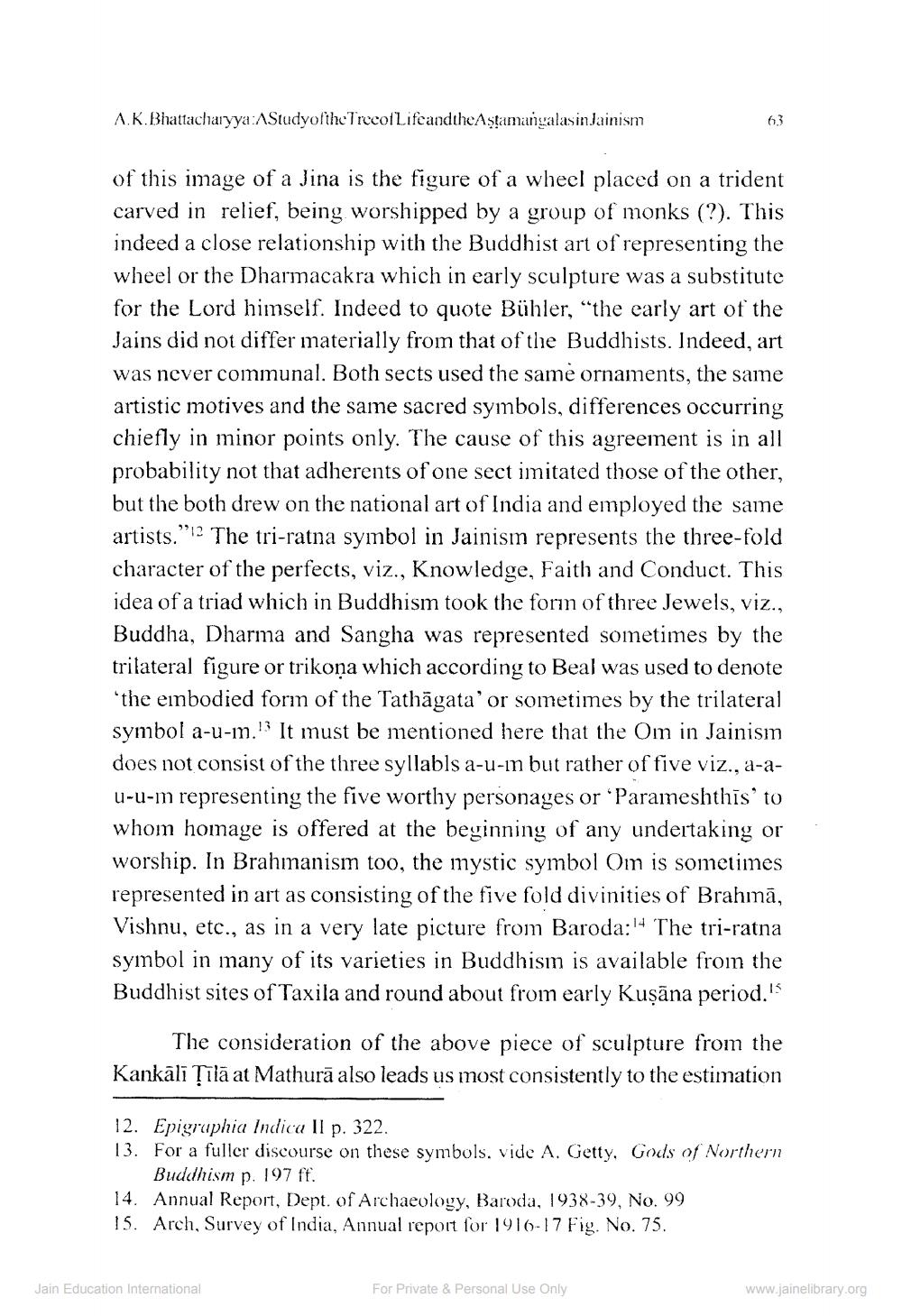________________
A.K.Bhattacharyya:AStudyofthe TrecofLifeandtheAstamangalasin Jainism
of this image of a Jina is the figure of a wheel placed on a trident carved in relief, being worshipped by a group of monks (?). This indeed a close relationship with the Buddhist art of representing the wheel or the Dharmacakra which in early sculpture was a substitute for the Lord himself. Indeed to quote Bühler, "the early art of the Jains did not differ materially from that of the Buddhists. Indeed, art was never communal. Both sects used the same ornaments, the same artistic motives and the same sacred symbols, differences occurring chiefly in minor points only. The cause of this agreement is in all probability not that adherents of one sect imitated those of the other, but the both drew on the national art of India and employed the same artists." The tri-ratna symbol in Jainism represents the three-fold character of the perfects, viz., Knowledge, Faith and Conduct. This idea of a triad which in Buddhism took the form of three Jewels, viz., Buddha, Dharma and Sangha was represented sometimes by the trilateral figure or trikona which according to Beal was used to denote 'the embodied form of the Tathāgata' or sometimes by the trilateral symbol a-u-m.13 It must be mentioned here that the Om in Jainism does not consist of the three syllabls a-u-m but rather of five viz., a-au-u-m representing the five worthy personages or 'Parameshthis' to whom homage is offered at the beginning of any undertaking or worship. In Brahmanism too, the mystic symbol Om is sometimes represented in art as consisting of the five fold divinities of Brahma, Vishnu, etc., as in a very late picture from Baroda:14 The tri-ratna symbol in many of its varieties in Buddhism is available from the Buddhist sites of Taxila and round about from early Kuṣāna period.
63
The consideration of the above piece of sculpture from the Kankali Tīlā at Mathura also leads us most consistently to the estimation
12. Epigraphia Indica II p. 322.
13. For a fuller discourse on these symbols. vide A. Getty, Gods of Northern Buddhism p. 197 ff.
14. Annual Report, Dept. of Archaeology, Baroda, 1938-39, No. 99
15. Arch, Survey of India, Annual report for 1916-17 Fig. No. 75.
Jain Education International
For Private & Personal Use Only
www.jainelibrary.org




